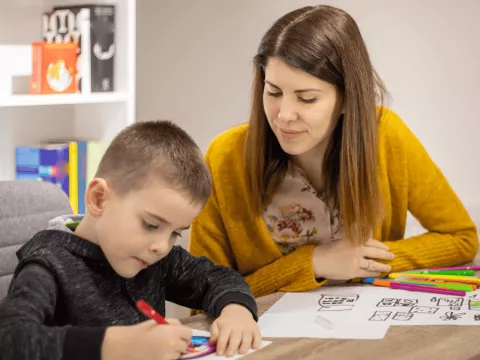- AdventHealth

Choose the health content that’s right for you, and get it delivered right in your inbox.
Australian conservationist and television star, Bindi Irwin, revealed she has suffered "insurmountable pain" from endometriosis for a decade. In a social media post, Irwin, 24, said she underwent surgery to find relief from the condition. She also noted she’s sharing her story now "for other women who need help.”
Posting a photo of herself lying in a hospital bed, Irwin stated trying to remain positive and hide the pain was "a very long road,” and that she endured "insurmountable fatigue, pain and nausea" over many years.
She wrote, "A doctor told me it was simply something you deal with as a woman and I gave up entirely, trying to function through the pain.” Along with Bindi Irwin, we’re here to let all women know that endometriosis is certainly not something that you should be expected to deal with, and that the condition can be debilitating as in Irwin’s case.
What is Endometriosis?
In endometriosis, tissue like that which lines the uterus — the endometrium — grows outside of the uterus. Endometriosis most commonly impacts the ovaries, fallopian tubes and the tissue that lines the pelvis. The misplaced tissue acts like normal endometrial tissue does. It thickens, breaks down and bleeds with each menstrual cycle. But with no way to leave the body, it becomes trapped.
An inflammatory condition, this is why endometriosis pain tends to flare up the worst during certain points in the menstrual cycle as the tissue responds to the hormone fluctuations. It leads to bleeding inside the pelvis, inflammation, swelling and scarring of the surrounding normal tissue. It may also cause ovarian cysts, which can also be severely painful.
Who Is at Risk for Endometriosis?
Anyone who menstruates can develop endometriosis. However, there are some risk factors that increase the chances of developing it, such as:
- Abnormal uterus tissue
- Being between ages 25 and 40
- Giving birth for the first time after age 30
- Having a first-degree relative (mother, sister, daughter) with the disease
- Having never given birth
- Higher-than-average estrogen levels
Endometriosis Signs and Symptoms
In her statement, Bindi Irwin wrote of her severe endometriosis pain, “I knew I couldn't live like I was. Every part of my life was getting torn apart because of the pain.” Approximately one out of every ten women of childbearing age feel the same way.
Some of the most common endometriosis symptoms include:
- Abnormal and/or heavy menstrual flow
- Bloating
- Constipation
- Diarrhea
- Excessively painful menstrual cramps in the abdomen and/or lower back
- Fatigue
- Infertility problems
- Nausea
- Painful intercourse
- Painful bowel movements during periods
- Painful urination during periods
- Stabbing pains and/or dull aches in the pelvic region
Endometriosis Treatment Options
Even though endometriosis is a chronic condition with no cure, there are ways to reduce the amount of pain with a number of treatment options.
Some common endometriosis treatment options are:
Hormone therapy:
- Oral contraceptives, with combined estrogen and progestin (a synthetic form of progesterone) hormones, to prevent ovulation and reduce menstrual flow
- Progestins alone
- Gonadotropin-releasing hormone agonist, which stops ovarian hormone production, creating a sort of “medical menopause”
- Danazol, a synthetic derivative of testosterone (a male hormone)
Pain medication:
- Over-the-counter medications like Tylenol
- Non-steroidal anti-inflammatory drugs (NSAIDs), such as ibuprofen
- Surgical options like:
- Hysterectomy
- Laparoscopy
- Laparotomy
Talking about your symptoms with your OB/GYN can help you understand which treatment method will work best for you.
Endometriosis Care With Your Whole Health in Mind
"Let this be your validation that your pain is real and you deserve help," Bindi Irwin wrote. We join her efforts of working to end the stigma surrounding endometriosis, causing so many to suffer in silence.
If you’re experiencing pelvic pain and you think it might be from endometriosis, our caring team is here to help diagnose and treat what’s causing your pain. At every age and stage of life, we care for women in body, mind and spirit, treating you like we would our own daughters, mothers and sisters.
Learn more about our full spectrum of Women’s Care services and find one of our world-class providers who can care for you like family.


